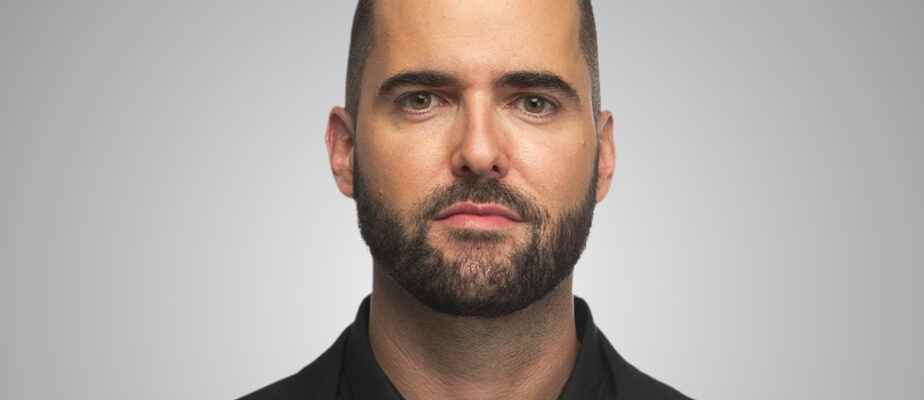Fifty shades of Grey.
This is the image that came to mind when I went on my annual pilgrimage to the CF Pointe-Claire shopping center in the West Island of Montreal last weekend.
I admit it, I needed to go to La Baie, and maybe also hope to find a Tiki-Ming still open, but above all I wanted to see once again how uninviting this area is.
And to be off-putting, it is.
First there is the parking lot, an ocean of asphalt with 5,500 spaces.
The Trans-Canada highway, too, a few dozen meters away, with its incessant flow of trucks and cars.
And finally the concrete structure of the Metropolitan Express Network (REM), which will soon operate its high-frequency light rail here.
It is in this greyish environment that the owner of the site, Cadillac Fairview (CF), has been designing for years a 400 million dollar redevelopment project on a portion of its huge parking lot.
The first phase provides for more than 800 housing units in three 20 to 25-storey buildings and a large public square, next to the future REM station.

IMAGE FROM CADILLAC FAIRVIEW WEBSITE
The first phase of the Cadillac Fairview project on part of its parking lot
A real Transit-Oriented Development (TOD), a compact neighborhood focused on transportation access. A project of which the new mayor of Pointe-Claire wants nothing, but then there, to know nothing at all.
Tim Thomas was elected in 2021 promising to curb densification. His administration threw out the special urban planning program (PPU) approved in 2018 by the municipality, which aimed to create a real “downtown” around the Pointe-Claire REM station.
All new real estate projects have been frozen until further notice, including that of CF1.
Pointe-Claire is far from the only city to rebel against the massive influx of new residents. The subject has been arousing passions across Canada lately.
There is a shortage of housing throughout the country, the price of rents is exploding, and it would be necessary to build at least 3.5 million housing units by the end of the decade (including 620,000 in Quebec) to hope to return to some form of affordability, according to the Canada Mortgage and Housing Corporation (CMHC).
This is a far cry from current housing starts forecasts.
Variable geometry strategies are beginning to be put in place at the provincial and city levels to speed up (or not) the pace.
Ontario is going strong and stomping toes in stride. In November, Doug Ford’s government adopted a strong law that relies, among other things, on increased densification near public transport.
In Quebec, the city of Trois-Rivières recently announced tax credits for builders of buildings with eight or more units.2. Rimouski has also just adopted a solid strategy to become denser.
All the solutions are good to add the most housing possible, as quickly as possible, plead the proponents of densification.
This movement upsets the established order – and the triumphant reign of the bungalow – almost everywhere. Cities oppose it for a host of reasons, such as the increase in car traffic or the loss of tranquility.
In Pointe-Claire, traffic congestion is “already hell,” Mayor Tim Thomas told me in an interview. Citizens refuse buildings as tall as those proposed by Cadillac Fairview and want to keep their green spaces, he adds, such as the wooded area adjacent to the REM station, which belongs to CF.
The development freeze will remain in effect while consulting citizens, he tells me, a process of at least two years.
A fringe of municipal councillors, at odds with the mayor, on the contrary, wants the project to be carried out and has offered to resume dialogue with the promoter. This group of elected officials instructed the City’s Director General to put the project back “on track” by launching a new “citizen participation” process.
Cadillac Fairview finds itself stuck in the middle of these internal heartbreaks.
The situation has become “very difficult to follow”, summarized Brian Salpeter, senior vice-president of development of CF. His group worked for six years – and invested millions – to develop the first phase of his project, which respects the PPU of 2018, he recalls.
“What we want to do is continue discussions on a normal basis with the City, and not start a process from scratch,” he said.
No question of embarking on a new consultation that CF never requested in the first place, he argues to me in short. The group filed a lawsuit against the City of Pointe-Claire in March 2022 and this legal process will follow its course.
Nothing suggests a resolution of the short-term impasse in Pointe-Claire.
Meanwhile, other cities in the metro area are welcoming densification with open arms and are erecting TODs at full speed to meet housing demand.
In Brossard, on the South Shore, billions have already been invested around two REM stations which are due to come into service in the spring. And the movement will continue, with the construction of a brand new “downtown” around the future Panama terminus of the REM.
In total, Brossard plans to build 17,000 homes, which will represent investments of approximately $7.7 billion, Mayor Doreen Assaad told me on Wednesday.
Could Quebec impose densification targets in the new version of the Planning and Town Planning Act, which will be unveiled shortly? There will be no “wall to wall”, the Minister of Municipal Affairs, Andrée Laforest, told me on Wednesday, but the law will offer tools to cities to “better densify”.
Many, including myself, are eagerly awaiting the details.
